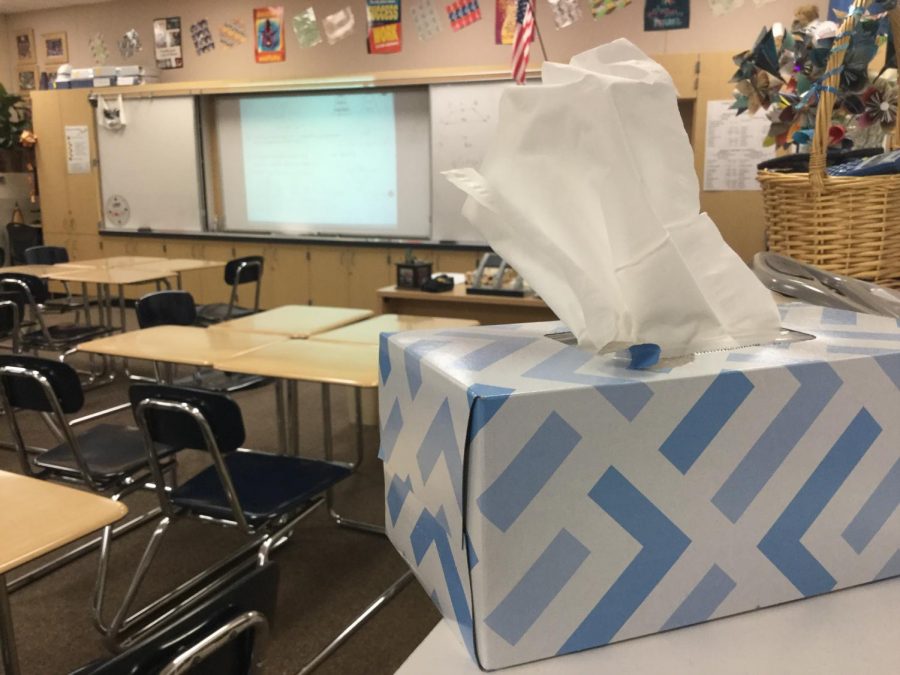Sniffle Season
Tissues are essential during the spring season, and many classes such as room 335 contain at least one box.
April 3, 2020
On March 19, the official arrival of spring brings seasonal phenomena that many can look forward to. In the coming months, the season brings warmer weather, new plant life, and the much anticipated spring break. Conversely, spring also means finals, the revival of dormant insects, and of course, spring allergies.
Weather has always had an impact on seasonal allergies, particularly during spring. According to Healthline, “more than 25 million Americans” suffer from seasonal allergies. Angelina Pintang (9) is one such sufferer that has experienced “…very bad allergies ever since I was young.” These allergic reactions are caused by airborne particles of pollen, which are produced by some plants to transfer male DNA to female flowers (Sciencing).
Production of pollen is essential to the plant reproduction process, but for humans, the small yellow grains can be somewhat inconvenient to say the least. For Angelina Pintang (9), the combination of “asthma as well as severe allergies… makes [her] start to cough and have breathing problems.”
The American College of Allergy, Asthma and Immunology (ACAAI) predicts that warmer winters have caused an “earlier than normal” allergy season. It is likely that many are already dealing with the following symptoms: an itchy throat, red/itchy/watery eyes, runny/stuffed noses, sneezes, and coughs (WebMD). It may come as a surprise that such reactions are combative responses of our immune systems; your body mistakes the allergen for a dangerous substance, so it produces antibodies and histamine proteins that trigger such reactions (Medical News Today).
There are certain weather conditions that encourage the growth of pollen producing plants, in turn encouraging allergies. Healthline reports that “pollen counts are higher” in “warm, dry, and windy” weather. Unfortunately for the allergic population of Yorba Linda, the region has experienced these exact conditions in the past few weeks.
Fortunately for the afflicted, there are various methods to treat their symptoms. Allergist Richard Weber, M.D. says that “Relief might seem impossible… but by knowing what triggers symptoms and how to avoid these allergens, sufferers can lead healthy, active lifestyles with minimal side effects.” Over-the-counter drugs have been used to relieve symptoms, but once diagnosed by an allergist, one could also receive prescription treatments. Popular over-the-counter methods are eye drops and nasal sprays, and popular prescription drugs are antihistamine and decongestant combos (WebMD).
Household practices serve a practical alternative to over-the-counter and prescription drugs. In order to prevent further pollen exposure, Medical News Today recommends shutting windows and doors, dusting, showering before bed, and vacuuming.
The allergic are encouraged to uphold these practices, especially on days with relatively high “pollen counts,” the number of pollen grains in a cubic meter of air. On days with a significantly higher pollen count, around 120, even the mildly allergic are recommended to stay indoors. Pollen counts can be found in local weather forecasters or even through downloadable apps such as Allergy Alert or My Pollen Forecast (Pollen).





































